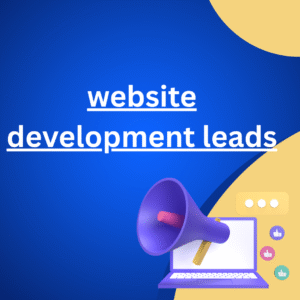In the competitive landscape of scientific industries, effective lead generation is paramount. Businesses in this sector, ranging from biotech startups to established research instrument manufacturers, constantly seek new clients. The demand for innovative solutions and specialized expertise is ever-present. Therefore, a robust strategy for identifying and acquiring potential customers is not merely beneficial; it is essential for growth and sustainability. Without a consistent influx of qualified leads, even the most groundbreaking scientific advancements can struggle to find their market. This is where strategic lead generation steps in, bridging the gap between scientific innovation and commercial success
Understanding the Science Market’s Unique Demands
The science market is distinct from many others. Its audience is often highly educated and discerning. Scientists and researchers prioritize precision, latest mailing database reliability, and data-driven evidence. They are less swayed by generic marketing claims. Instead, they seek solutions that directly address their complex research needs. Trust and credibility are foundational in this sector. Scientific professionals rely on peer recommendations and demonstrable proof of efficacy. Moreover, the sales cycles can be considerably longer. Decisions often involve multiple stakeholders.
Traditional Lead Generation Challenges in Science
Traditional lead generation methods often face significant hurdles in the science sector. Cold calling, for instance, can be ineffective. Scientists are frequently busy with experiments or data analysis. They have limited time for unsolicited calls. Generic email blasts also yield low engagement rates. Such emails often fail to resonate with specialized audiences. Trade shows and conferences, while valuable, are expensive. Their reach can also be limited to attendees.

The Power of Text Promotion Services for Science Leads
Text promotion services offer a highly effective alternative for science lead generation. This method leverages SMS or messaging platforms. It delivers targeted, concise information directly to prospects. Its strength lies in its immediacy and high open rates. Unlike emails, text messages are almost always read promptly. This directness makes them ideal for time-sensitive offers. For scientific businesses, this means quick dissemination of new product launches.
Why Text Messages Resonate with Scientific Professionals
Text messages, despite their brevity, hold significant appeal for scientific professionals. Their busy schedules often preclude long phone calls. They also limit time spent sifting through lengthy emails. Text messages offer a quick, digestible format. They provide essential information at a glance. This efficiency is highly valued in fast-paced research environments. Scientists appreciate direct communication. They prefer getting to the point quickly. Text messages facilitate this straightforward exchange. Moreover, the mobile nature of text messages is a key advantage. Scientists are often on the go. They move between labs, offices, and fieldwork.
Key Features of Effective Science Text Promotions
Effective science text promotions possess several key features. Firstly, they are always permission-based. Opt-in consent is non-negotiable. This ensures compliance with regulations. It also respects recipient privacy. Secondly, messages are concise and clear. Scientific jargon is used appropriately, but unnecessarily complex language is avoided. Each message delivers a singular, strong call to action (CTA). This might be “Learn More,” “Register Now,” or “Download Whitepaper.” Thirdly, segmentation is crucial. Messages are highly targeted. They are sent to specific audience segments. This is based on their research areas or past product interests. Fourthly, timing is important. Messages are sent during optimal hours. This avoids disruption and maximizes engagement. Fifthly, value proposition is clear. Every text must offer tangible value.
Implementing a Text Promotion Strategy for Science Lead Generation
Implementing a successful text promotion strategy for science lead generation requires careful planning. It is not just about sending messages. It involves building a comprehensive ecosystem. First, define your target audience precisely. Understand their scientific disciplines and research needs. Identify their pain points and desired solutions. This detailed understanding informs message content. Second, choose a reliable text promotion service provider. Look for features like advanced segmentation. Ensure robust analytics and compliance support.
Building Your Opt-In List for Scientific Prospects
Building a high-quality opt-in list is foundational for text promotion success. Never purchase lists. Always prioritize organic growth and explicit consent. One effective method is offering valuable gated content. This could be exclusive scientific reports. It might be specialized webinars or research templates. In exchange for access, users provide their phone numbers. They also agree to receive relevant texts. Another approach involves website pop-ups. These can appear when visitors show interest in specific products or services. A simple form allows them to sign up for updates. Event registrations are also excellent opportunities.
Crafting High-Converting Text Messages for Science
Crafting high-converting text messages why is it important to maintain the quality of your email list for a scientific audience demands precision. Every word counts. Start with a clear, benefit-driven headline. This should immediately grab attention. For example, “New Lab Efficiency Protocol.” The body of the message must be concise. It should convey a single, powerful idea. Focus on solving a specific scientific problem. Highlight a unique advantage of your solution. Use strong action verbs.
Measuring Success and Optimizing Your Science Text Campaigns
Measuring the success of your science text promotion campaigns is vital. Without robust analytics, optimization is impossible. Key performance indicators (KPIs) provide insights into campaign effectiveness. The delivery rate is a fundamental metric. It indicates how many messages successfully reached recipients. A low delivery rate might signal issues with your list quality. Or it could point to technical problems. Open rates are another crucial KPI.
Iterative Optimization of Text Promotion Campaigns
Optimization is an ongoing, iterative aero leads process in text promotion. It is not a one-time task. Begin by analyzing your KPI data. Identify areas for improvement. If your CTR is low, test different message headlines. Experiment with various CTAs. Change the language to be more benefit-driven. If your conversion rate is low, examine your landing pages. Are they mobile-friendly? Is the value proposition clear? Is the form easy to complete? If your opt-out rate is high, reconsider your message frequency. Are you sending too many messages?
